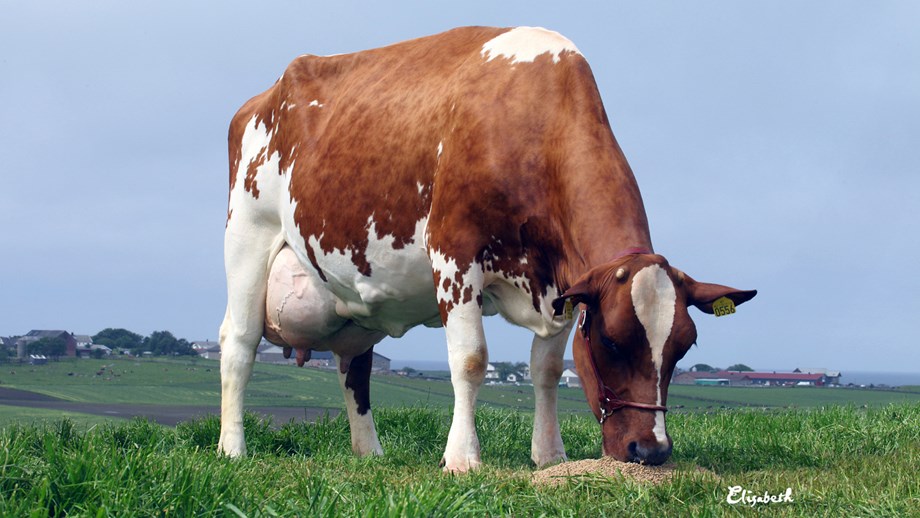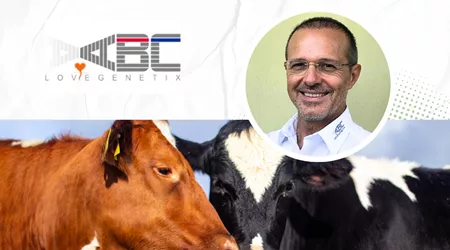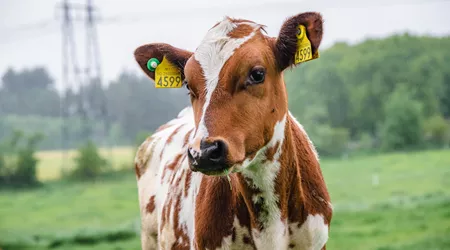By Gary W. Rogers
Dairy cattle continue to be a critical source of beef in most countries and beef production from dairy herds is a critical component of profitable and sustainable dairy production.
Norwegian Reds are unlike Holsteins, Jerseys and other traditional dairy breeds for beef performance and value because they have not been selected for higher angularity or dairy form and because the Norwegian Red breeding program has included selection for beef characteristics of the males as well as selection for health and fertility for well over 40 years.
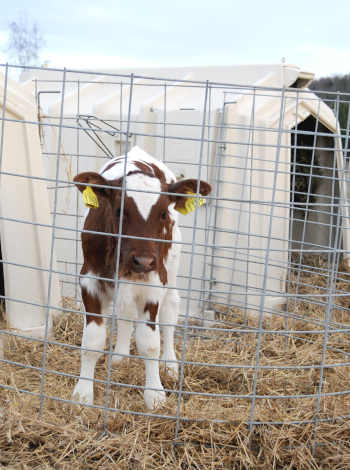
Norwegian Red breeding program has historically focused also on beef traits for bull calves. Photo: Solveig Goplen
Selection for health and fertility along with beef characteristics in males has resulted in cows that maintain excellent body condition and that go to slaughter in a healthy state with excellent body condition. This provides high-quality beef production from the slaughter of Norwegian Red cows and outstanding beef production from male calves.
The traditional breeding approach using only dairy breeds
Many dairy herds continue to use conventional semen from traditional dairy sires for all heifer and cow matings and then market male calves and surplus heifers through traditional channels. Unfortunately, male calves from traditional dairy breeds have little to no economic value and create a liability for some herds. In the best circumstances, male calves from many traditional dairy breeds have very limited value.
Norwegian Red sires provide advantages in daughter health and fertility and they can eliminate concerns over low economic values for male calves because Norwegian Red influenced calves to have much better beef characteristics than most other traditional dairy breeds.
Beef on dairy breeding approach
A significant percentage of herds in many countries now utilize sexed semen on the best heifers and best cows and then mate lower-ranking heifers and cows to beef semen so that the calves that are not going to be herd replacements have additional beef value (especially compared to 100% dairy breed calves). Herds should weigh the added costs of using sexed semen against the benefits of higher quality heifers for replacements plus the higher valued beef cross calves that will result.
The use of sexed semen and beef semen in combination provides better economic returns in many herds compared to the traditional approach of utilizing dairy sires for all matings. All herds using this strategy should benefit from higher-quality replacement heifers. However, some herds may not be able to consistently get a large premium for the beef sired calves compared to traditional dairy breed male calves.
Benefits of Norwegian Red
Beef characteristics of the cow herd will impact their final slaughter value and the quality of their calves that eventually go for beef. The use of beef semen on dairy cows does not eliminate the contribution of dairy cows to the beef supply chain. All dairy cows except those that die on the farm eventually go to slaughter and the beef from these cows is used for human consumption. Healthy cows with good body condition at slaughter are preferable to thin cows with little or no muscling and Norwegian Red sires will help with health and body condition as well as muscling when compared to most traditional dairy breeds.
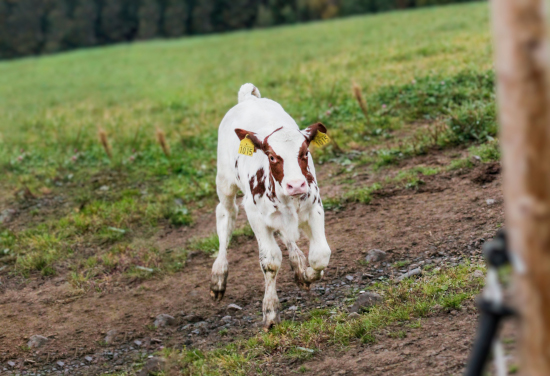
Norwegian Red calves are recognized as being extremely vital and healthy. Photo: Turi Nordengen
In addition, calves designated for beef and sired by beef sires from dams with Norwegian Red influence will perform better for key beef traits compared to calves from mothers that are based only on most traditional dairy breeds like Jersey and Holstein.
The big question is now of course: “How good is the performance of the Norwegian Red calves?”. Data from the US and Norway can provide a baseline for what to expect from the Norwegian Red influenced beef.
Beef data on Norwegian Red crosses from the US
Beef data on Norwegian Red crosses is scarce but in 2004 and 2012 the US Meat Animal Research Center in Nebraska looked at beef characteristics of steers sired by Norwegian Red bulls in comparison with several important beef breeds in the US.
This study found that marbling in Norwegian Red sired crosses was superior to all common beef crosses except for Wagyu crosses. Calf growth through weaning and carcass growth from birth until slaughter (15 to 16 months) for Norwegian Red crosses was also competitive with Angus and Hereford sired crosses. In addition, muscling (ribeye area) of the Norwegian Red sired steers was just slightly lower than Angus and Hereford sired steers.
Beef data on pure Norwegian Reds in Norway
Beef data on pure Norwegian Reds as well as several beef breeds is routinely collected in Norway. Carcass data are recorded on slaughtered cows and young males used for beef in Norway. Male calves are normally not castrated in Norway and males are mostly slaughtered at about 15 to 18 months of age. Norway has a significant number of beef cattle so growth, muscling and fat characteristics are recorded in several beef breeds as well as in Norwegian Reds.
Purebred Norwegian Red bulls grow at about the same rate as purebred Angus and Hereford bulls in Norway (see Table 1). In addition, muscling scores and fat level at slaughter in purebred Norwegian Red bulls are only slightly lower than in Angus and Hereford bulls at approximately 17 months of age. Norwegian Red bulls are similar to Angus and Hereford bulls when ready for slaughter in Norway.
Table 1. Carcass growth, muscularity, and fat level in Norwegian Red, Angus, and Hereford bulls slaughtered in Norway at about 17 months of age.
| Breed | Carcass growth/day (kg/lbs.) | Muscling (scale 1-15) | Carcass fat (scale 1-15) |
| Norwegian Red | 0.50/1.10 | 5.2 | 6.0 |
| Angus | 0.48/1.05 | 6.5 | 6.6 |
| Hereford | 0.50/1.10 | 6.3 | 7.0 |
Bottom line
Norwegian Red is a high-yielding dairy breed recognized for superior fertility, health traits, and feed efficiency. Crossing traditional dairy breeds like Jersey and Holstein with Norwegian Red will also improve beef production from dairy herds. This will lead to improved profitability of the herd and provide for a more sustainable dairy industry. Commercial dairy producers around the world should consider the improved beef performance that comes from using Norwegian Red genetics in their crossbreeding programs.
